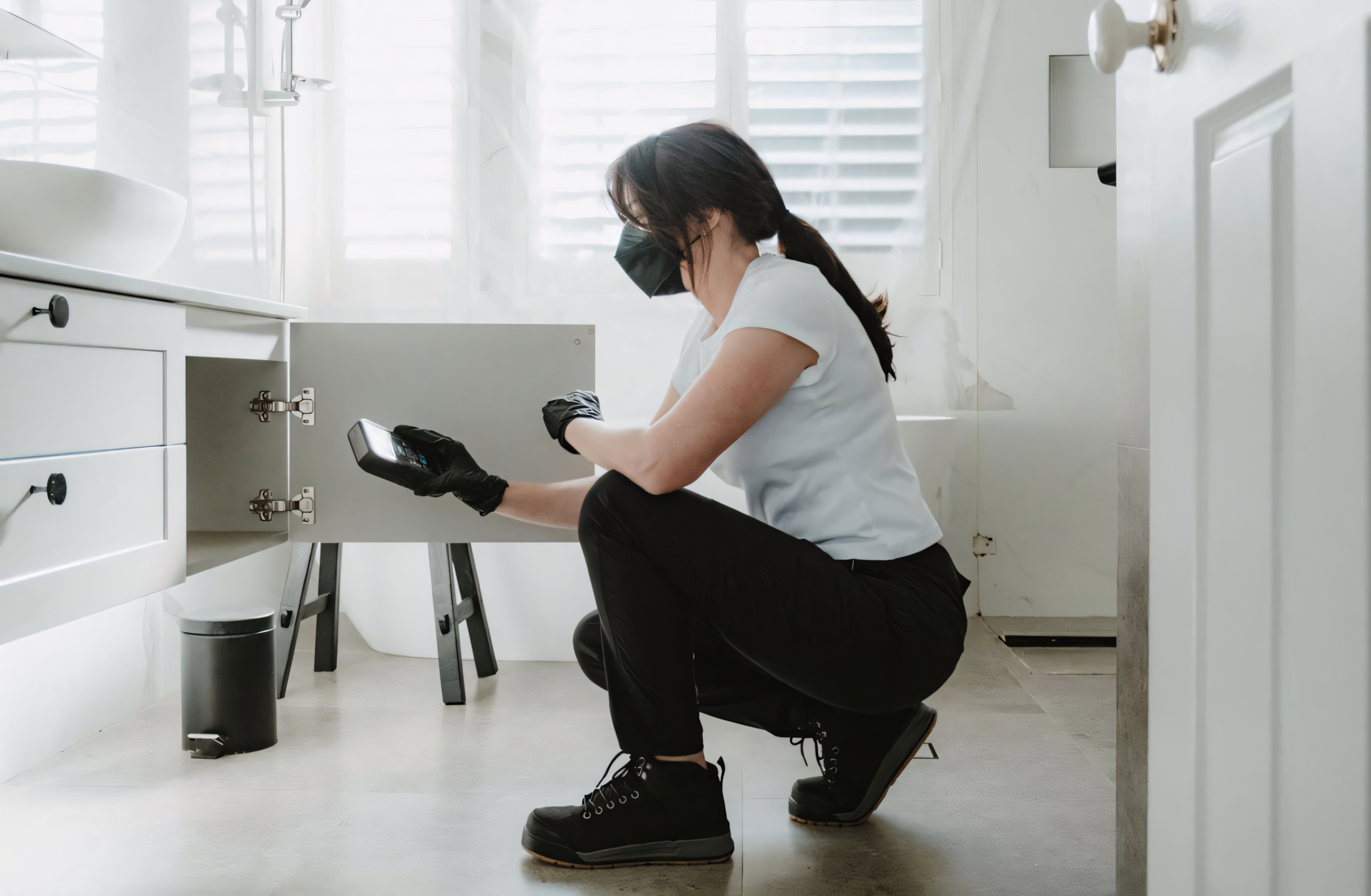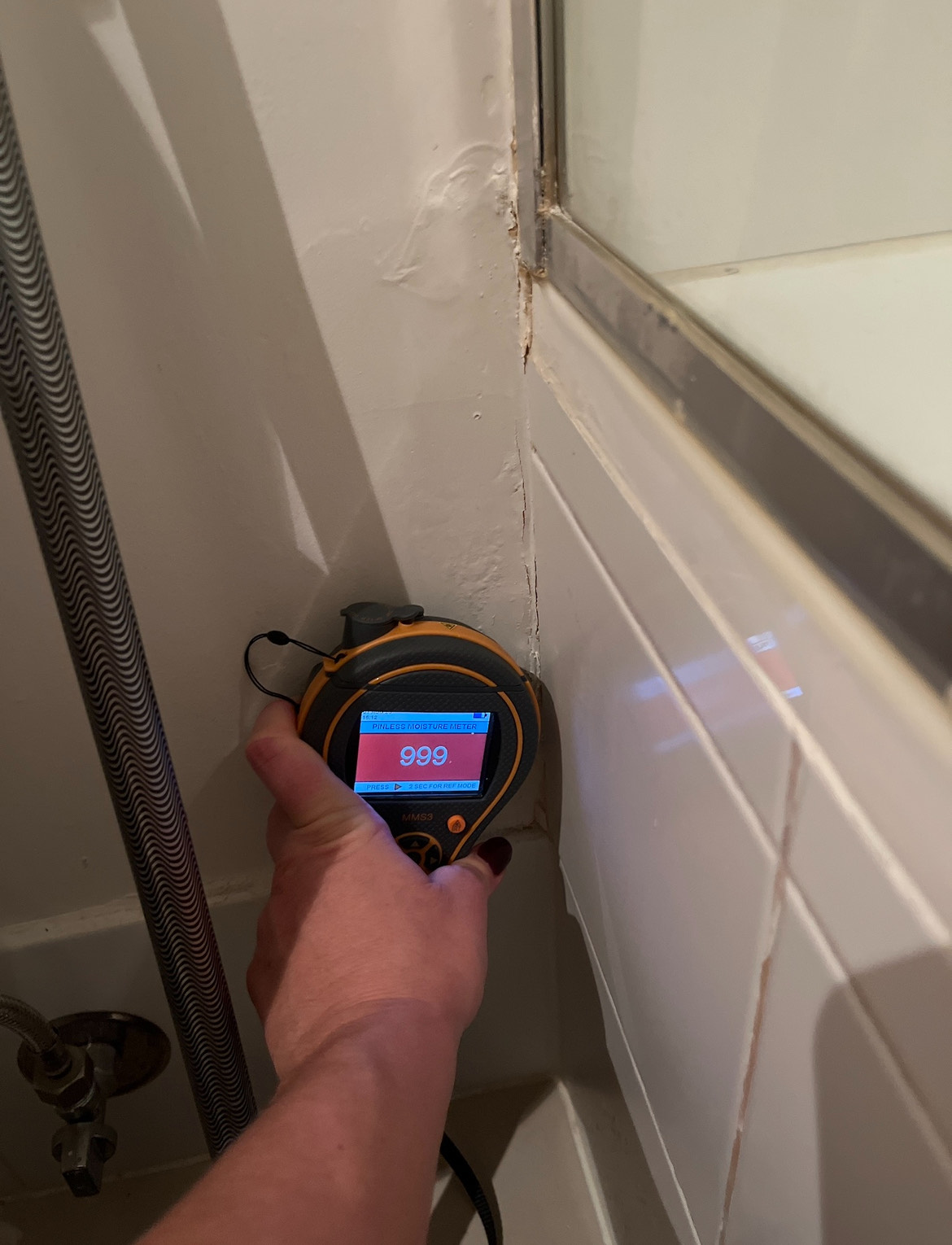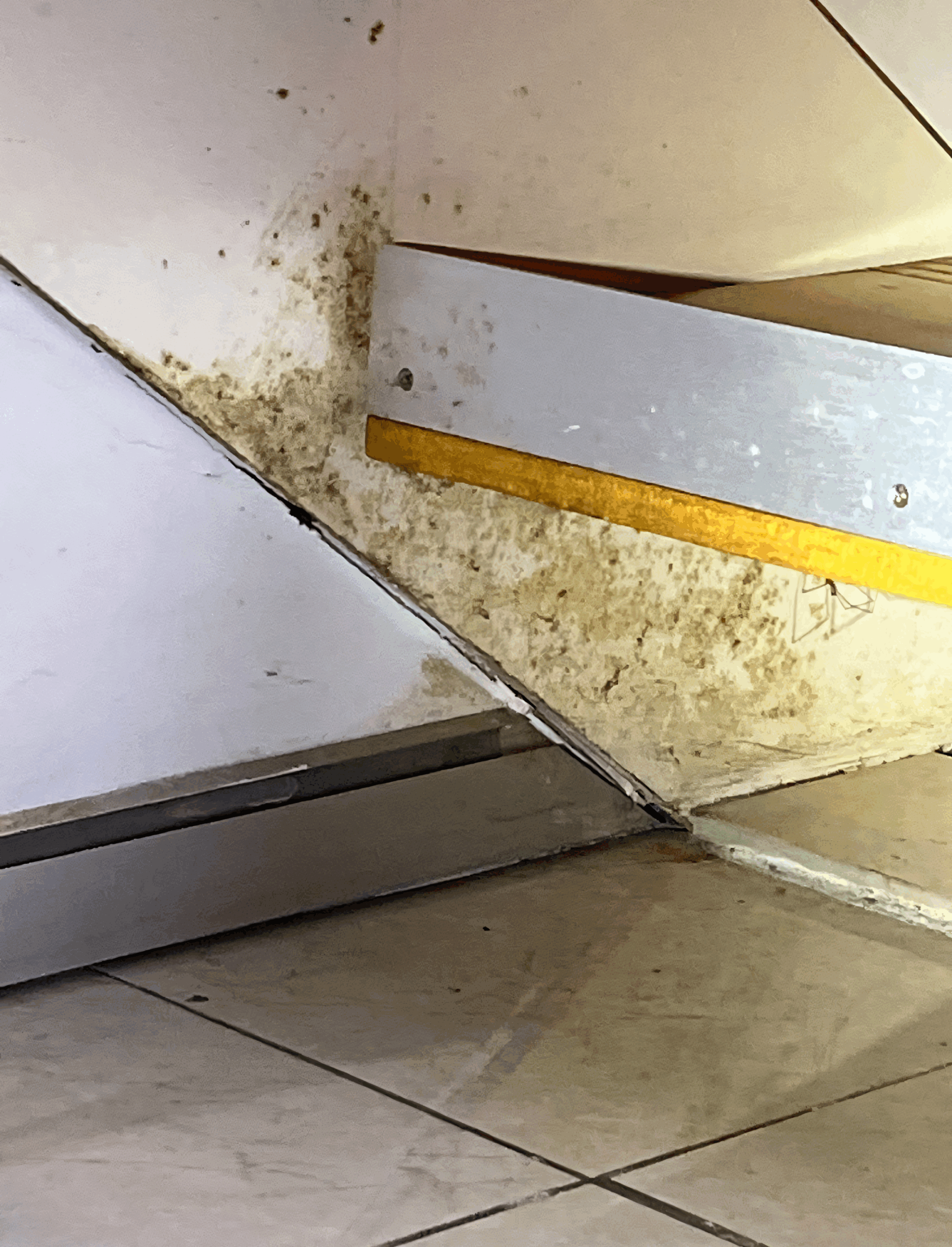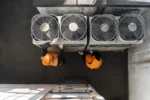
Ecolibrium speaks with Jess Ward, whose experience with mould-related illness led to an extraordinary career change.
For most people, discovering that they have a serious medical sensitivity to mould would discourage them from ever setting foot in a mouldy building again. Jess Ward took the opposite path.
In 2022, Ward was diagnosed with chronic inflammatory response syndrome (CIRS) caused by more than a decade of living in homes with “hidden mould”. Realising just how widespread residential mould is in Australia, Ward pivoted away from her education as a veterinarian and a promising career in the public service to help others suffering from this often-invisible condition. She retrained as a mould inspector and opened her own Sydney-based inspection business, MouldWise.
Ward talked with Ecolibrium about her work as a mould inspector, the most common issues she sees in Australian homes, and how HVAC can be both a blessing and a curse when it comes to mould growth and spread.
Ecolibrium: How did you decide to get into a career as a mould inspector? What did the training and qualifications involve?
Jess Ward: Becoming a mould inspector was an extremely unexpected career change – my background is in animal science and I previously worked as a dog attack investigator. I came into this industry through personal experience after dealing with a whole host of unexplained health issues that were eventually linked to hidden mould in our home. My then one-year-old son was also being affected.
Through that journey, I quickly realised how overlooked and under-recognised indoor mould contamination is and how widespread the effects can be. Once I began to recover after remediating, and experiencing how challenging that was, I knew I had to try to help make it easier for others going through the same.
My training involved formal qualifications in mould inspection and post-remediation verification, completed through the Australian College of Environmental Studies (ACES), as well as additional training I undertook through the Institute of Inspection, Cleaning and Restoration Certification (IICRC) and other smaller certifications to gain a broader understanding of building science, ventilation, and how moisture moves within structures.
“You need to be able to not only find the mould, but understand why it’s there in the first place. .”


Ongoing professional development is also key in this field, particularly as the science and awareness around mould and related chronic inflammatory conditions evolve.
Could you walk us through what a residential mould assessment involves?
A typical residential assessment starts with a detailed client history and questionnaire –covering what symptoms they or their family may be experiencing, what they’ve noticed in the home (odours, water damage, condensation etc.), and whether there have been any known water damage events.
I then conduct a full inspection of the property, both inside and out. This includes using tools like moisture meters, infrared cameras, borescope cameras and thermo-hygrometers to assess for dampness, leaks, and humidity issues, as well as thorough visual inspection of all areas. For the average sized home, this usually takes around seven hours. In addition, I’ll collect air and surface samples to account for contamination that is invisible to any of the tools mentioned. At the end, I compile a comprehensive report with findings, recommendations, and (where needed) a remediation plan.


What are the most common problems you see, and what are the most typical causes of these problems?
The most common issues I come across are hidden water damage issues. Generally speaking, where there’s water damage, there will be mould not far behind. Unless the water intrusion is dealt with within 24–48 hours, which can be very difficult when it’s hidden, then microbial growth will have begun.
For the large majority, what I find is failed shower waterproofing membranes causing hidden mould in the bathroom and cross-contaminating adjacent rooms. We aren’t building bathrooms like we used to, that’s for sure! Hidden mould behind kitchen and laundry cabinets is very common, as well as roof and gutter issues, subfloor mould and moisture migrating upwards. Poorly maintained air conditioning systems are another huge issue.
You mention in your blog having an extreme sensitivity to mould nowadays. Does that pose any difficulties when you spend so much time working in mouldy spaces? How do you get around that?
Yes, it definitely creates challenges.
“When I found that my home was making me sick and I started to learn the signs of hidden mould and water damage in a home, I realised that it wasn’t just my current home that was the issue – it was every single home I had lived in for 10 or so years prior. ”
My sensitivity developed after long-term exposure to toxic mould.
For inspections, the only way around that is to wear a full-face respirator, as well as protective clothing in more contaminated environments like roof cavities and subfloors.
Outside of work, I’m mindful of where I spend long periods of time, and I also use air purifiers and dehumidifiers religiously. Detox is important too – when needed I take a prescription detox medication called Cholestyramine that’s used to treat toxic mould illness (also known as chronic inflammatory response syndrome or CIRS). For those genetically susceptible to becoming sick from mould because they aren’t able to detox from it, medications like this are crucial for recovery and maintaining good health.
I avoid handling mould remediation myself. My role is strictly assessment and guidance, which is best practice under the IICRC S520 industry standards anyway – the inspection and remediation should be performed by two unaffiliated companies. It’s not always easy – I need to be extra careful about cleaning my gear – but it helps me relate to clients on a deeper level, especially those with similar sensitivities, as I know how hard it can all be.
What kind of steps do you normally advise if you find significant mould in a home?
The first step is to stop the source of moisture – whether that’s a leak, drainage issue, or ventilation failure. Without that, any remediation will fail. From there, I recommend professional mould remediation by an IICRC-certified company, ensuring that building materials are removed under containment and with negative air pressure and air filtration systems in place.
Afterwards, the affected area – and any other areas identified through sampling methods to have been “cross-contaminated” – must undergo a detailed environmental clean, often called “small particle cleaning”. This includes addressing any affected contents, though noting that porous items like soft furnishings often can’t be salvaged when contamination is significant. For sensitive individuals in particular, restoring the space to what we call “normal fungal ecology” is essential – not just removing visible mould and leaving the rest unattended to.
Where adequate remediation and small particle cleaning doesn’t happen – say that an en suite has a mould issue and has cross-contaminated the bedroom, but the bedroom doesn’t get cleaned – occupants will generally have ongoing health issues, as there is ongoing exposure. Afterwards, post-remediation verification testing by an independent mould inspector (not the remediation company) is essential to ensure the space is safe again.
What role does good ventilation and air conditioning have in preventing mould growth/spread?
Ventilation is critical. A well-ventilated home allows moisture to escape as needed. Bathrooms and laundries should have exhaust fans that vent to the outside (not into the roof cavity!). Poor ventilation and unmanaged humidity often cause build-up of mould on soft furnishings too. Many homes have chronic humidity levels above 60%, which can encourage mould growth even without a leak or any water damage. It’s really important to utilise either air conditioning or dehumidifiers to maintain indoor air humidity levels below 60%.
Air conditioning plays a huge role in preventing mould by managing moisture and drying out the home, especially in humid climates. But there’s a caveat: only if they’re maintained properly.




“As an inspector, I often find that the air conditioner is the sole source of mould exposure in a home.”
In a recent home I saw, a young boy had respiratory issues that he’d been repeatedly hospitalised for, and it turns out that both split system units had not been serviced in more than seven years, so they were heavily contaminated with mould growth. One of the systems was next to his room.
As someone who is mould sensitive, I can tell you that mouldy air conditioning systems can make it difficult when being out and about. Dirty filters and coils can become mould sources themselves. I always recommend cleaning air conditioners every six months in mould-sensitive homes in humid climates like Sydney – otherwise, once a year is a good rule in a more forgiving climate.
Learn more
After her own experience with toxic mould-related illness, Jess Ward gained accreditation as a mould inspector and established MouldWise, her own Sydney-based inspection business. She writes regular blog posts offering insights and advice for people who are sensitive to mould and those living with mould in their home – scan the QR code to read her latest entries.

This article appears in Ecolibrium’s Spring 2025 edition
View the archive of previous editions
Insights from a mould inspector
Latest edition
See everything from the latest edition of Ecolibrium, AIRAH’s official journal.





